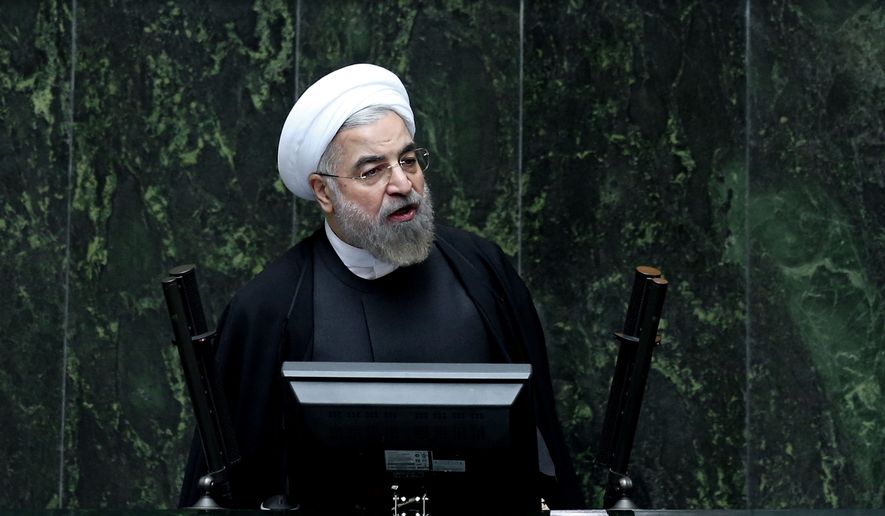Claiming that Iran’s government has been lying for years to U.N. nuclear inspectors, a prominent Iranian dissident group on Tuesday asserted that scientists in the Islamic Republic have actually been running a secret uranium enrichment operation at a facility buried deep beneath the ground in the northeast suburbs of Tehran since 2008.
The facility, known as “Lavizan-3,” has been used for clandestine nuclear program research and development, as well as for enrichment with advanced IR-2m and IR-4 centrifuge machines, according to the National Coalition of Resistance of Iran, which claims that the operation’s existence has never before been revealed to international officials.
The NCRI’s claim was not immediately verifiable, and the dissident group is known for its controversial history in Washington. However, the group is seen to have deep sources inside Iran’s nuclear community and its members are credited with having made game-changing revelations about Tehran’s activities in the past.
Most notably, during the early 2000s, similar NCRI claims exposed the existence of Iran’s Natanz uranium enrichment facility and the Arak heavy-water plutonium facility — two operations that have been at the center of international scrutiny and distrust of Tehran during the years since then.
The group said its latest claims were the result of a “decade-long, detailed, risking and complex” intelligence gathering effort by members of the Mujahedin-e Khalq. The so-called “MEK” is a main component of the NCRI, but has long drawn scrutiny in Washington because the State Department had listed it as a terrorist organization until 2012.
While the MEK is seen as virulently against the current regime in Tehran, U.S. officials have said the group’s terrorist listing was related to attacks its members carried out against U.S. interests in the Middle East decades ago.
The NCRI said Tuesday that MEK operatives have “highly placed sources within the Iranian regime as well as those involved in the nuclear weapons projects.”
Iranian officials have long argued that their nuclear program is for purely peaceful and civilian purposes. But the U.S. and its allies say Tehran has secretly tried to build a bomb in violation of orders from the U.N. Security Council, and Western powers for years have leveled economic sanctions against the Islamic republic and pursued a global embargo on Iranian oil.
It was not immediately clear on Tuesday how the new claims by the NCRI may impact the ongoing nuclear negotiations between Iran, the U.S. and other world powers. The Obama administration has long said that the aim of the negotiations is the prevent Iran from developing a nuclear weapon and to use diplomacy to avoid a potential military standoff over the nuclear dispute with Tehran.
There were indications Monday that U.S. and Iranian negotiators may be close to reaching a two-phase nuclear deal that would hinge on a provision allowing Tehran to ramp up its uranium enrichment gradually after a 10-year period of restrictions and inspection from outside powers.
But such a deal would depend on Iranian authorities allowing full inspections by the International Atomic Energy Agency (IAEA), the U.N.’s nuclear watchdog agency. And it was not clear Tuesday whether the IAEA may already have knowledge of the “Lavizan-3” facility.
In a confidential report last week, the IAEA said that Iranian authorities still haven’t addressed allegations that they carried out explosives tests and other activities that could have been aimed at developing a nuclear bomb.
A copy of the report obtained by Reuters and The Associated Press said that Iran is honoring its commitment to reduce its nuclear enrichment activities — a promise made during talks over the past year with the U.S. and other world powers — but that Tehran has not addressed some specific issues fueling suspicion that it conducted research toward the creation of a bomb.
“Iran has not provided any explanations that enable the agency to clarify the outstanding practical measures,” the IAEA report said, according to Reuters.
• Guy Taylor can be reached at gtaylor@washingtontimes.com.




Please read our comment policy before commenting.